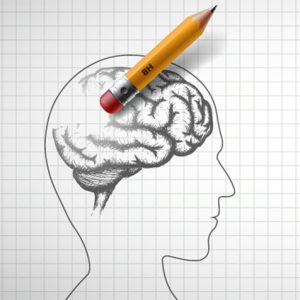50 million people around the world are living with dementia and that figure is set to reach 152 million by 2050. Ahead of tonight’s public lecture, neuroscientist Dr Mark Dallas tells us how understanding ‘brain glue’ could hold the secret to detecting dementia decades before the first symptoms appear.
Our brains are made up of 170 billion cells – that’s 24 times the population of planet Earth. We now know that there is roughly a 50:50 split of nerve cells to other cells. These other cells are collectively termed glia after the Greek word for glue, because they were once thought of as the glue that helped to hold the nerve cells together.

Scientists now know that these cells are in fact key players in brain function, maintaining a healthy environment for the nerves cells to communicate with each other.
Of interest to dementia scientists is that fact that these cells may be first responders to signs of damage. Why does this matter? It matters because it is about this point in time that scientists believe an individual living with Alzheimer’s disease today would start experiencing subtle, almost undetectable changes in their brains.
Therefore, if we know more about these cells and what they do, we may be able to detect dementia some 20 years before current diagnosis.
Dementia is an umbrella term for catastrophic mental decline, which arises from the targeted destruction of brain cells. It is the loss of these brain cells that contributes to the outward signs of dementia, such as memory loss or changes in personality.
It is estimated that by 2025, a million people in the UK will be living with dementia. While the disease doesn’t discriminate on a human level, it does at a cellular level. The cells that are lost to the disease are called nerve cells, but there are other cells within our brains that react very differently to the ensuing tsunami of toxicity.
Our work, generously supported by the dementia charities, has been looking at these cells in the lab to try and identify cellular ‘switches’ that control the changes in their activity. We can investigate their activity by looking at how their shapes change in response to various stimuli. Furthermore, using microscopes and cameras we can look inside these cells to get a real-time fluorescent readout of the cells’ performance.
Our hope is that, by identifying switches, we can develop new medicines that can alter the course of dementia progression. It may be that medicines already exist that target these switches in other cells. Here, we could fast track the testing of these medicines for people living with dementia.
My lecture – being live streamed tonight on Facebook from 7.30pm – will take you on a neuroscience journey to explore the ‘hoovers’ and ‘police officers’ in your head and how dementia affects them. Furthermore, it will highlight the fact that the glue in your head could be critical to fighting dementia well before you or even your doctor realise it.
So, while 26 million people in the UK know someone living with dementia, the diversity of your brain could actual provide answers to the global challenge of tackling dementia.
Watch a sneak preview of Mark explaining his research below:
